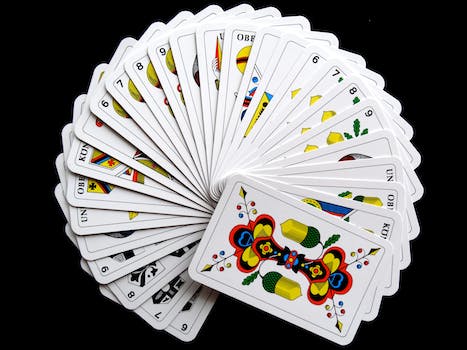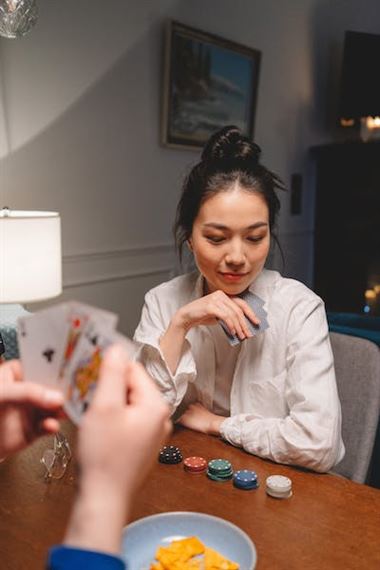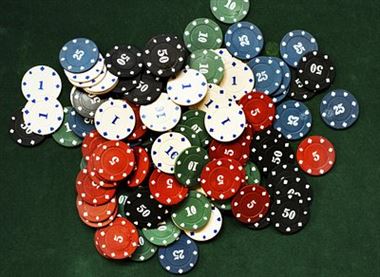“The Art of Bluffing: Advanced Poker Strategies Unveiled” is a comprehensive guide that delves into the intricacies of bluffing in poker. This guide explores advanced techniques and strategies employed by skilled players to deceive their opponents and gain an edge at the poker table. By unraveling the secrets behind successful bluffs, this guide aims to equip poker enthusiasts with the knowledge and skills necessary to elevate their game to the next level. Whether you are a seasoned player looking to refine your bluffing skills or a beginner seeking to understand the nuances of this art, “The Art of Bluffing” offers valuable insights and strategies to enhance your poker gameplay.
The Psychology Behind Successful Bluffing in Poker
Successful bluffing in poker is not about randomly throwing in bets and hoping for the best. It is a calculated move that involves careful observation, analysis, and manipulation of your opponents’ thoughts and emotions. To master the art of bluffing, one must delve into the psychology behind it.
One of the key psychological factors in successful bluffing is understanding your opponents’ tendencies and playing styles. Every player has their own unique way of approaching the game, and by observing their actions and reactions, you can gain valuable insights into their thought processes. Are they conservative and risk-averse, or are they aggressive and prone to taking risks? By understanding these traits, you can tailor your bluffing strategies accordingly.
Another important aspect of successful bluffing is the ability to read your opponents’ body language and facial expressions. Non-verbal cues can reveal a lot about a person’s thoughts and emotions, and in poker, they can be a goldmine of information. A slight twitch, a nervous glance, or a subtle change in breathing pattern can indicate that your opponent is bluffing or has a weak hand. By honing your observation skills and paying attention to these cues, you can gain a significant advantage at the poker table.
However, it is important to note that bluffing is a double-edged sword. Just as you are trying to deceive your opponents, they are also trying to deceive you. This is where the concept of “leveling” comes into play. Leveling refers to the process of thinking one step ahead of your opponents and anticipating their moves. It involves considering what they think you are thinking and adjusting your strategy accordingly. By staying one step ahead, you can outsmart your opponents and increase your chances of successful bluffing.
Timing is another crucial element in successful bluffing. Knowing when to bluff and when to fold is a skill that separates the amateurs from the professionals. Bluffing too often or at the wrong time can be disastrous, as it can lead to unnecessary losses. On the other hand, a well-timed bluff can be a game-changer, allowing you to steal pots and build your chip stack. It requires a deep understanding of the game dynamics, the players involved, and the current state of the game.
Mastering the Art of Reading Opponents in Poker Bluffing
Bluffing is a technique used in poker to deceive your opponents into believing that you have a stronger hand than you actually do. It is a risky move that requires careful observation and analysis of your opponents’ behavior and betting patterns. To successfully bluff, you must be able to read your opponents and understand their tendencies.
One of the key aspects of reading your opponents is observing their body language and facial expressions. A player who is bluffing may display signs of nervousness, such as fidgeting or avoiding eye contact. On the other hand, a player with a strong hand may appear more relaxed and confident. By paying attention to these subtle cues, you can gain valuable insights into your opponents’ hands.
Another important factor in reading your opponents is analyzing their betting patterns. A player who consistently bets aggressively may be bluffing, trying to intimidate others into folding their hands. Conversely, a player who suddenly starts betting cautiously may have a strong hand and is trying to lure others into betting more. By studying your opponents’ betting patterns, you can make more informed decisions about when to bluff and when to fold.
It is also crucial to consider the context of the game when reading your opponents. Different players have different playing styles, and their strategies may vary depending on the stakes and the stage of the game. For example, a player who is short-stacked and desperate may be more likely to bluff, while a player with a large chip stack may be more conservative. By understanding the dynamics of the game, you can adjust your own strategy accordingly.
In addition to reading your opponents, it is equally important to be aware of how you are perceived at the table. If you have a reputation for being a tight player who only bets with strong hands, your opponents may be more inclined to fold when you bluff. On the other hand, if you have a loose image and frequently bluff, your opponents may be more likely to call your bets. By being mindful of your own image, you can use it to your advantage when bluffing.
Mastering the art of reading opponents and bluffing in poker takes time and practice. It requires a keen sense of observation, an understanding of human psychology, and the ability to make calculated decisions based on the information available. By honing these skills, you can become a formidable player who can outwit and outmaneuver your opponents at the poker table.
Effective Strategies for Bluffing in High-Stakes Poker Games
One of the most important aspects of bluffing is timing. Knowing when to bluff and when to fold is crucial in high-stakes games. Bluffing too often can make you predictable and easily exploitable by your opponents. On the other hand, not bluffing enough can make you too cautious and allow your opponents to take advantage of you. Therefore, it is essential to carefully choose the right moments to bluff.
Another key strategy in bluffing is reading your opponents. Pay close attention to their betting patterns, body language, and reactions. Look for any signs of weakness or strength. If you notice that an opponent is hesitant or unsure, it may be a good opportunity to bluff. However, if an opponent is confident and aggressive, it is wise to be cautious and consider folding. Remember, bluffing is all about exploiting your opponents’ weaknesses and capitalizing on their mistakes.
Furthermore, it is crucial to consider the table dynamics when bluffing in high-stakes games. The number of players, their playing styles, and the overall atmosphere at the table can greatly influence the success of your bluff. Bluffing against tight and conservative players is generally more effective than bluffing against loose and aggressive players. Additionally, bluffing in late position, when you have more information about your opponents’ hands, can increase your chances of success.
A well-executed bluff requires a convincing story. It is essential to construct a narrative that makes sense and is consistent with the actions you have taken throughout the hand. For example, if you have been playing aggressively and betting consistently, a sudden check or a small bet may indicate a strong hand and confuse your opponents. Similarly, if you have been playing passively and suddenly make a large bet, it may appear as a bluff and force your opponents to fold.
However, it is important to note that bluffing should not be overused. It is a high-risk strategy that should be used sparingly and selectively. Bluffing too frequently can lead to a loss of credibility and make your opponents more likely to call your bluffs. Therefore, it is crucial to mix up your play and balance your bluffs with strong hands. This will keep your opponents guessing and make it harder for them to read your intentions.
The Role of Body Language in Bluffing: Poker Tells to Watch For
Poker tells are physical or verbal cues that players unknowingly give off, revealing the strength or weakness of their hand. These tells can be subtle, such as a slight twitch or a change in breathing pattern, or more obvious, like a nervous laugh or a sudden increase in betting. Recognizing and interpreting these tells can give a player a significant advantage at the poker table.
One common tell to watch for is the shaking of hands. When a player has a weak hand, they may experience a slight tremor in their hands due to nervousness or anxiety. This shaking can be a clear indication that they are bluffing and trying to appear confident. On the other hand, a player with a strong hand may purposely shake their hands to throw off their opponents and make them believe they are bluffing. It is important to observe the consistency of the shaking and consider other factors before making a judgment.
Another tell to be aware of is the movement of the eyes. When a player is bluffing, they may avoid making direct eye contact or quickly glance away when asked a question. This could be a sign of discomfort or unease, indicating that they are trying to hide something. Conversely, a player with a strong hand may maintain steady eye contact to intimidate their opponents and make them doubt their own cards. It is crucial to pay attention to these subtle eye movements and use them to your advantage.
Furthermore, changes in breathing patterns can also be revealing. When a player is bluffing, they may unconsciously hold their breath or breathe more rapidly due to heightened anxiety. This change in breathing can be a valuable tell, indicating that they are trying to deceive their opponents. Conversely, a player with a strong hand may deliberately slow down their breathing to appear calm and collected. By observing these breathing patterns, you can gain insight into the strength of your opponents’ hands.
It is important to note that poker tells are not foolproof indicators of a player’s hand strength. They can be easily manipulated and faked by skilled players. Therefore, it is essential to consider other factors, such as the player’s betting patterns, their overall demeanor, and their previous actions at the table. By combining these observations with the analysis of body language, you can make more informed decisions and increase your chances of success.
Bluffing as a Skill: How to Perfect Your Poker Bluffing Techniques
One of the first things to consider when perfecting your poker bluffing techniques is your table image. Your table image is how other players perceive you based on your previous actions and behavior at the table. If you have been playing tight and conservative, other players are more likely to believe that you have a strong hand when you decide to bluff. On the other hand, if you have been playing loose and aggressive, your opponents may be more inclined to call your bluff.
Another important aspect of bluffing is timing. Knowing when to bluff is crucial to its success. Bluffing too often can make you predictable and easy to read, while bluffing too rarely can make your bluffs less believable. It is important to pay attention to the dynamics of the game and the behavior of your opponents. Look for opportunities when the board favors your bluff or when your opponents seem weak or hesitant.
In addition to timing, the size of your bluff is also significant. A small bluff may not be enough to convince your opponents to fold, while an overly large bluff may raise suspicion and lead to a call. It is important to find the right balance and make your bluff appear realistic. Consider the pot size, your opponents’ stack sizes, and the betting patterns of the players involved. A well-calculated bluff can be a powerful weapon in your poker arsenal.
Furthermore, body language and poker tells play a crucial role in bluffing. Observing your opponents for any signs of nervousness, hesitation, or excitement can give you valuable information about the strength of their hand. Similarly, being aware of your own body language and controlling your emotions can help you maintain a strong poker face and avoid giving away any tells that may reveal your bluff.
Lastly, it is important to be adaptable and flexible in your bluffing strategies. Different opponents may respond differently to your bluffs, and what works against one player may not work against another. Pay attention to the tendencies and playing styles of your opponents and adjust your bluffing techniques accordingly. This adaptability will make you a more unpredictable player and increase your chances of success.
In conclusion, bluffing is an art that requires skill, observation, and strategic thinking. Perfecting your poker bluffing techniques involves understanding your table image, timing your bluffs effectively, sizing your bluffs appropriately, reading your opponents’ body language, and being adaptable in your strategies. By mastering the art of bluffing, you can become a formidable player at the poker table and increase your chances of winning.



